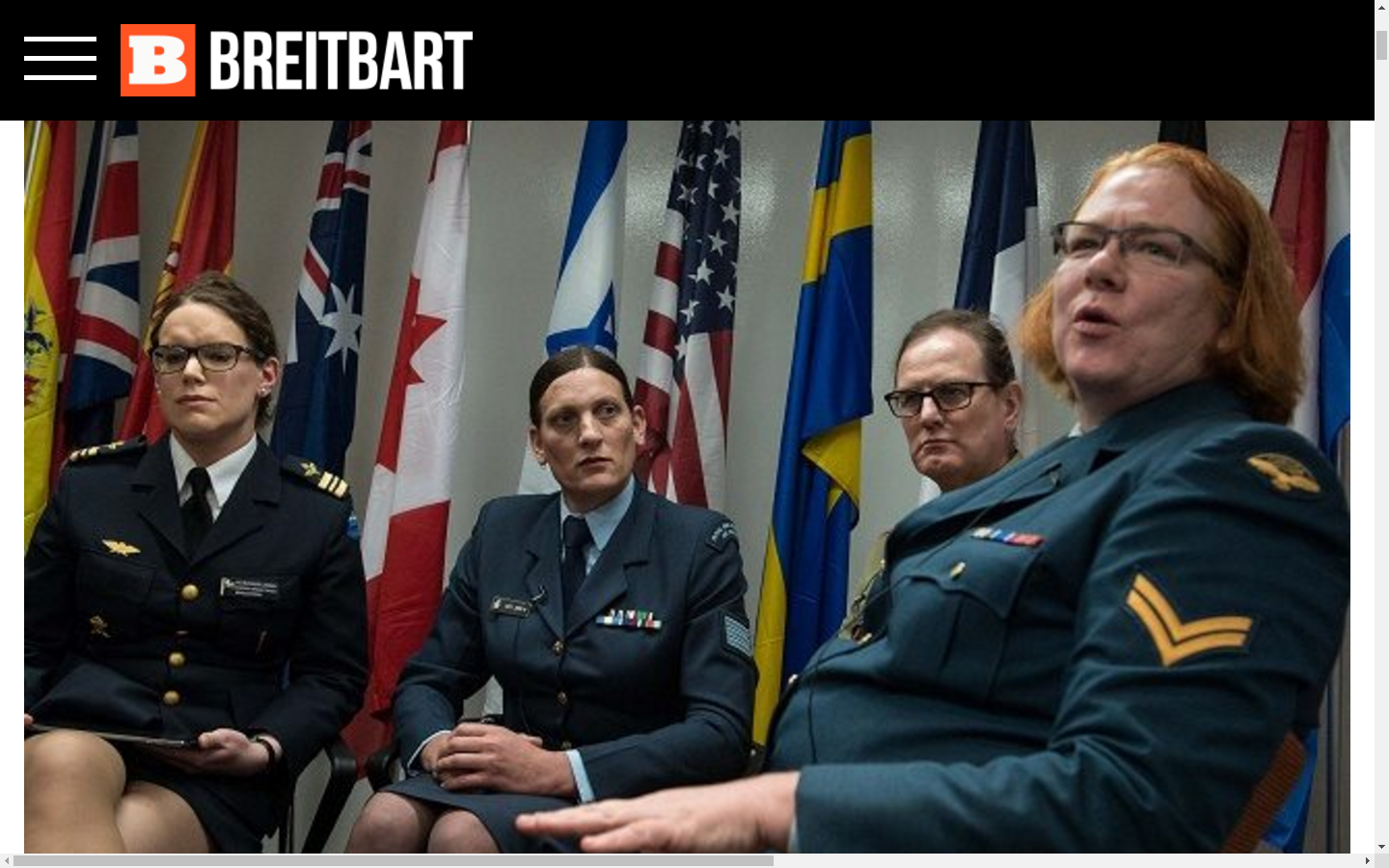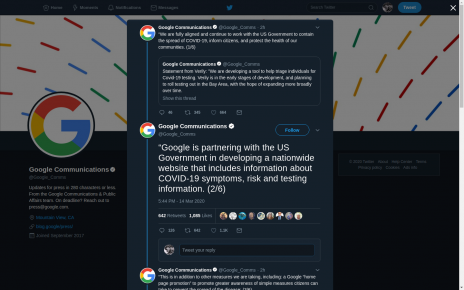“it looks like a sixties military theme drag party at the Taximeter Club! Wasn’t there once a fine line between being out and being respectful of the uniform”

Military personnel who wish to dress as the opposite sex may now do so, according to an announcement from Defense Secretary Ashton B. Carter.
Carter said, however, that new recruits would have to crossdress for at least 18 months prior to joining the military, presumably to avoid last-minute transitions from one mode of dress to another. Still, if a member of the armed forces wishes to swap genders while serving on active duty, that person may be able to do so “if a military medical provider determines it is necessary,” according to reports.
If any soldier would like to take a further step and undergo gender reassignment surgery, the Pentagon would cover the medical costs, Carter added.
“Effective immediately, transgender Americans may serve openly,” Carter said. “They can no longer be discharged or otherwise separated from the military just for being transgender.” More at Source
This is from a gay maerican male. His comments, not ours:
Edward James said…
POST ACTIVITY REPORT – PERSPECTIVES ON TRANSGENDER MILITARY SERVICE FROM AROUND THE GLOBE –
References
- https://www.aclu.org/perspectives-transgender-military-service-around-globe
- RAAF Transitioning Gender Handbook
Attended by
MAJ Donna Harding SQNLDR Catherine Humphries SQNLDR Vince Chong
1. SQNLDR Humphries and MAJ Harding are post transition women and contributed their personal experiences transitioning in Defence and supporting other personnel who are undergoing gender transitioning to the conference. SQNLDR Chong represented Diversity Directorate to provide insight into diversity and inclusive policy for transgender people in the ADF and his experiences providing support to LGBTI people of the ADF.
Background2. The aim of the conference was to gather experiential evidence from transgender service members from countries that allow open transgender service to answer the question “Would it be possible for transgender personnel to serve in the US military”. Australia is one of 18 countries that allow transgender members to serve.1 This academic conference was co-hosted by the Palm Center at the University of San Francisco, and the American Civil Liberties Union in Washington DC. Travel costs for attendees were substantially funded by the Palm Center, with the exception of meals, incidentals, ground transportation and a component of airfares.
3. Service chiefs provided approval for attendees to represent their services at the conference. LTCOL Phillip Hills from ADS(W) attended at the request of O/VCDF given that VCDF could not attend.
4. Other participants were from the Swedish Defence Force, the Royal Air Force, the Royal Canadian Air Force, the Royal New Zealand Air Force, the Israeli Defence Force, the US military, and international academics attended and contributed to the conference. There was a very strong media interest and presence.
Key Themes Communicated During the Conference
5. MAJ Harding was a panelists for the session “Foreign Military Experiences: Transgender Troops Tell Their Stories”. Her presentation included these key themes:
- The aim of transitioning is to relieve the dysphoria and the disabling symptoms gender dysphoria (GD) produces.
- The cost of treatment is cheap when compared lifetime costs to the person and ADF if GD is not treated.
1 Hague Centre for Strategic Studies Report 2013: LGBTI Military Personnel a Strategic Vision for Inclusion, http://www.hcss.nl/reports/lgbt-military-personnel-a-strategic-vision-for-inclusion/149/
2
c. The aim of treatment is to relieve the dysphoria and not to change men into women and vice versa.
- That being able to serve openly and authentically had substantial positive impacts on her performance and effectiveness – an experience shared by many others.
- That the Defence LGBTI Information Service (DEFGLIS) Realisation – Realignment – Resolution (R3) model for awareness and promoting understanding of responsibilities associated with gender transition provides a common framework applicable to all military forces. Annex A provides additional detail about this model.
6. SQNLDR Humphries was a panelist for the session ”Deployment in Austere Conditions: Stories from Combat Zones”. Her presentation included these key themes:
- The living conditions and ablutions for a member who has transitioned are no different than those required by any other male or female in an austere, deployed environment.
- Following successful transition a member is just as capable as any other member in their ability to perform their job. Capability is not eroded, it is in fact increased as a member no longer suffers the adverse effects of hiding their true gender identity.
- Similar to any member who is to be deployed, a member who has transitioned must satisfy exactly the same requirements for physical fitness and suitability for the job.
- The requirement to take medication in the deployed environment cause no impediment to the member or the system, noting that many members deploy while taking a variety of different medications.
7. SQNLDR Chong was a panelist for the session “Lessons Learned and Best Practices”. His presentation included these key themes:
- While transgender support is often a component of broader support for LGBTI people, it is vital to have specific transgender role models to provide representation, advice and support.
- Military forces should strive to achieve an appropriate balance between policy, passive guidance, active innovative education and leadership to achieve successful transgender inclusion. Sufficient policy allows leaders to focus attention on individual needs of members and the workplace and not administrative minutia. Defence is working to identify an implement an appropriate balance of these techniques meet culture and organisational objectives.
8. The director of the Palm Centre Professor Aaron Belkin established that the parameters for the meeting were to gather evidence from experience in an academic fashion and specifically disallowed political commentary. Attendees provided no views about any US policy during the conference. Separate media interviews were not conducted.
9. International participants recognized the RAAF Handbook on Gender transition was as being the most comprehensive guide available for military forces and civil services.
3
Media Results
10. Mainstream media reporting of the conference internationally has been positive. Quotes from attendees are consistent with ADF values, and the ADF Diversity and Inclusion Strategy. Examples of positive reports include:
- http://www.shfwire.com/Transgender-rights-are-the-real-LGBT-issue-of-our-time
- http://www.dailymail.co.uk/news/article-2800742/transgender-military-personnel-18-countries- open-service-allowed-gather-discuss-military-join.html
- http://www.hurriyetdailynews.com/transgender-troops-seek-end-to-us-military- taboo.aspx?pageID=238&nID=73256&NewsCatID=358
Recommendations
11. It is recommended that DPG:
- endorse the establishment of ongoing dialogue with the UK, New Zealand, Canada, and Sweden to seek their policy documents associated with gender transition and collaborate to develop best-practice recommendations for ADF policy. These countries have well developed policies that are likely to contain material that could be adapted to economise efforts to accomplish the Defence Diversity and Inclusion Strategy 2012-2017.
- note that these countries are in the process of reviewing their policies. The submission from DEFGLIS in 2013, to the Diversity Directorate, in response to a call for comment to proposed changes to Understanding Gender Transition in the Workplace brought on by the changes to the Sex Discrimination Act, is a well developed document. This document builds on the extant guidance, the RAAF Handbook and the experiences of the affected population.
- endorse the development of an update to Defence guidance incorporating applicable elements from the RAAF guide on gender transition and lessons learned from personnel who have transitioned in each service to provide improved guidance for the whole of Defence.
- note that JHC is developing a Health Directive (HD) on GD and Transition. This needs to harmonise with any administrative policy guidance developed. This is particularly important as the medical, social and administrative components of successful gender transition, are mutually supporting.
- endorse the development of Defence policy for administrative aspects of gender transition to ensure the articulation of procedures to reduce potential administrative errors and to ensure legislative compliance with changes to the Sex Discrimination Act introduced in 2013 across the whole of Defence.
- endorse the continued establishment of a Defence Pride Network that is capable of providing peer-support, peer-mentoring and role models for transgender persons in Defence.
4
Conclusion
12. The prospect of gender transition is daunting to both the member involved and the chain of command. Equity, good leadership and a policy frame work makes the process less daunting and helps the member transition as expeditiously as possible. Further engagement with the Palm Center and international partners on policies surrounding gender transition would be advantageous to Defence.
Annex
A. Defence LGBTI Information Service (DEFGLIS) Realisation – Realignment – Resolution (R3) model
The Medical woman in the Army uniform even has this little rainbow accoutrement to her uniquely tailored uniform.
Finally (really) the conference was hosted by the ACLU – here are some of the causes it goes in to bat for.
And now for the rest of the story… Apparently this is what the “populace” wants…?





“…it looks like a sixties military theme drag party at the Taximeter Club! Wasn’t there once a fine line between being out and being respectful of the uniform? Edward James from the Dolls House”